My garden is heavily weighted towards late summer colour, so I have thought for many years that a small patch for June and early July would help extend the seasons as well as the plant palette. The autumn garden is tones of crushed raspberry and yellow but earlier in the year the colours, like the sun, are sharper and more defined. I would like my newly-planted area to be mainly shades of white with highlights from allium bulbs, which I may have to wait until the autumn to add if I cannot source them in containerised form.

The Guardian’s product and service reviews are independent and are in no way influenced by any advertiser or commercial initiative. We will earn a commission from the retailer if you buy something through an affiliate link. Learn more.
The area I have allocated is not large - about 4m x 2m - and faces almost due south. The backdrop to the new planting is an existing, mature Acer palmatum ‘Bloodgood’ which will add contrast with its plum coloured leaves - or at least that is the plan.
With so many plants to pick from it is hard to pin down a sensible number of choices. The temptation to have one of everything I love is still very great, even after almost 40 years gardening, but if I am to really harden my heart then I should start with form so, buxus for impact – a squat low ball at each end. A small shrub would be nice, perhaps a philadelphus (P. ‘Belle Etoile’ would be my ideal) but I think it is going to grow too large so I opt for Rosa ‘Margaret Merril’ instead. At about 1.5m tall and 1m wide, this rose provides colour and scent in a relatively compact form from June to September and the blooms as an added bonus make wonderful cut flowers. I always think of roses as quintessentially English and so this sets the tone of the scheme.
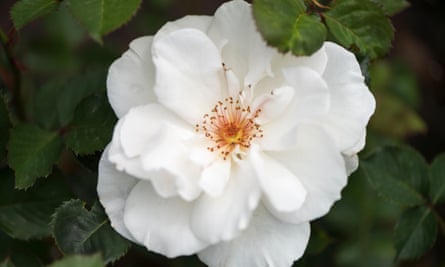
In front of the existing acer there has been for many years a large and extremely happy Aruncus dioicus that I will have to trim (or rather drastically cut in half) to fit the scheme. It has grown huge in the rich soil and I suspect will soon return to its former glory so the process will have to be repeated every three years to contain its vigor and maintain a sense of balance. The fluffy creamy white blooms fade to warm oatmeal before they have to be removed, which in a predominantly white scheme adds contrast.
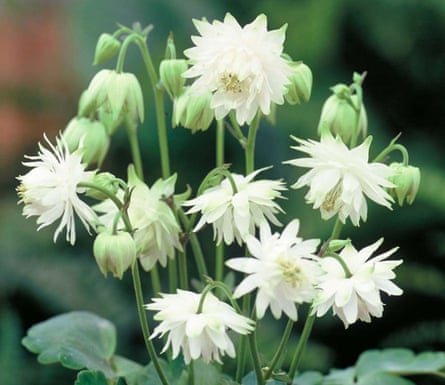
I will also be considering Aquilegia x hybrida ‘Green Apples’. This is of the first of the aquilegias to bloom, with white tinged green double clematis-like flowers held about 90cm high on sturdy wiry stems. Lasting for a good couple of months this is a no nonsense easy to grow garden staple that combines with grasses, astrantias and many other plants easily without stealing the show.
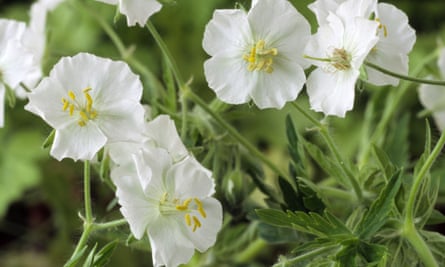
If you can keep the aphids and molluscs away then lupins are a joy in the garden. They can succumb to an overly wet winter, but Lupinus ‘Noble Maiden’s spires of puffy flowers are worth the trouble, since they add strong vertical forms to a scheme and associate well with lower storey perennials, such as Geranium phaeum ‘Album’. This is a truly great plant and will grow in part shade or sun, dry or damp soil happily. As it grows and matures, it forms a hummock of bright green leaves with a plum-coloured blotch in the centre. The leaves are so dense that a very useful byproduct of planting this (and pretty much any geranium) is they suppress weeds: if you garden at a large scale or simply with lots of plants in a small space, this is extremely helpful.
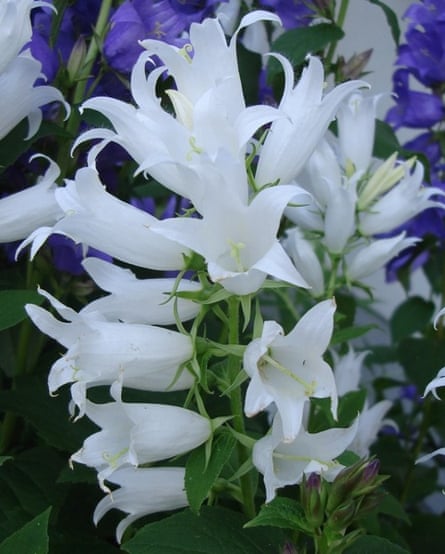
The 90cm tall spires of pure white Campanula latifolia var. ‘Alba’ are a beacon of shining light, standing out until well after dusk in the fading evening light. In a pure white scheme it is easy to lose definition, so an occasional splash of another colour is welcome. This particular campanula looks good with Astrantia major ‘Buckland’. Astrantias are brilliant plants and start to bloom early in the season but continue for a several months so they are extremely useful, especially as they do so nigh on unaided. This particular variety is a soft pink and looks lovely with white flowers and dusky plum foliage of actaea or heuchera which add definition.
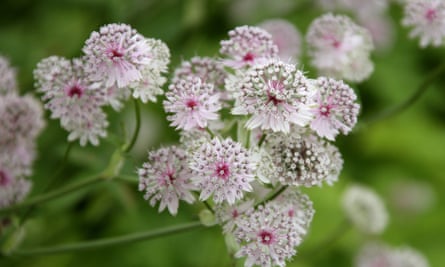
I think it would be hard not to include a peony of some sort in an early summer scheme. The double form Paeonia lactiflora ‘Festiva Maxima’ has huge white flowers with plum splashes on the edges of its petals, providing a visual link to the pink shade of the astrantia and help link the scheme together.
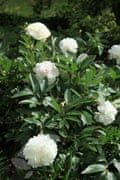
Along with the more obvious blooming plants, there are many grasses and foliage types to consider. Too many massed blooms makes for a visually complicated and hard-to-view scheme, so adding relief in the form of texture or simply leaf shape is important. My go-to plants of choice for this are hostas, ferns and grasses, and for early summer, the well behaved Hosta ‘Halcyon’ is great with its otherworldly glaucus tones.
The Japanese painted fern (Athyrium nipponicum var. pictum) will not thank you for planting it in sun, but nestled under the shade of the aruncus, providing it has enough moisture its silver green leaves will add sparkle (just keep in mind that it does prefer a more acidic soil). Calamagrostis and stipa make for the best early summer grasses, as does the rampant Phalaris arundinacea var. picta (more commonly known as gardener’s garters). This, if left unchecked, will take over a border in the blink of an eye, but with careful management its green and white leaves add a lightness to a scheme that it is well worth the time and effort spent managing it.
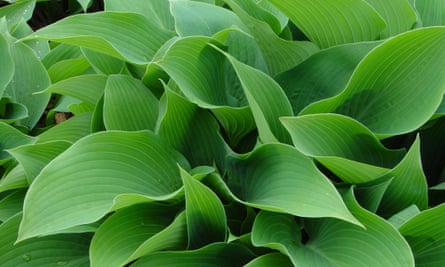
As with all new planting schemes, the key to long term success is in soil preparation. Here, underlying London clay has over many years been dug through and organic matter added, and the result of that back-breaking work is that the soil is now lush, deep, moisture retentive, full of worms and is able to support plants successfully. You can purchase the best plants from top nurseries, but if you plant them in poor ground they will only ever be a shadow of the self they could be with good ground and added organic fertiliser.
Since the climate is now more unpredictable than ever and we do not know if we are in for a soak or a drought, I tend to mulch yearly and additionally mulch new plants to help them settle in. I would rather not water with London water as it is full of limescale and hard. If the mulch holds in natural water and the plants can survive by themselves once settled, it gives me time to not only enjoy them but to move on to other schemes: after all, a garden is never complete and a gardener never happy unless they have a project in hand.
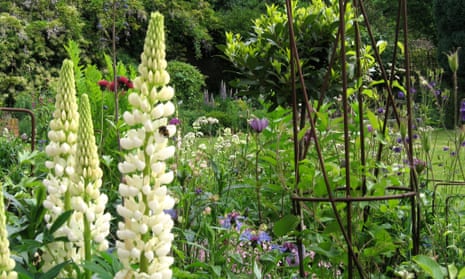
Comments (…)
Sign in or create your Guardian account to join the discussion